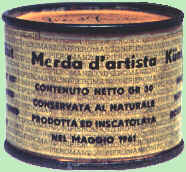http://www.jcanu.hpg.ig.com.br/art/art4jul/art0713.html
http://members.xoom.virgilio.it/all42day/art/art4jul/art0713.html
http://www.artcyclopedia.com/art42day/art0713.shtml
updated Saturday 12-Jul-2003 14:47 UT
| DEATH:
1530 METSYS |
| ^
Died on 13 July (or any day until 16 September)
1530: Quentin (or Quinten)
Metsys (or Massys, Matsys, Messys)
“de Smit”, of the plague, Flemish artist born
between 04 April and 10 September 1466. — Quinten Metsys was the son of a Leuven blacksmith, Joost Massys [–1483], and his wife, Katharina van Kinckem. About 1492 Quinten married Alyt van Tuylt [–1507], by whom he had three children: Quinten, Pawel and Katelijne. He was by then already living in Antwerp. In 1508 he married Catherina Heyns, with whom he had ten more children: Jan Massys [1509 – <08 Oct 1575] and Cornelis Massys [1510-1556], as well as Quinten II, Maria, Hubrecht, Abraham, Peternella, Katelijne II, Sara, and Susannah. Both Jan and Cornelis became artists — Metsys was the first important painter of the Antwerp school. Trained as a blacksmith in his native Leuven, Matsys is said to have studied painting after falling in love with an artist's daughter (or girlfriend). In 1491 he went to Antwerp and was admitted into the painters' guild. There are various stories about Quentin Metsys’s early training: according to Lampsonius, he was a blacksmith who took up painting in order to woo his sweetheart away from a painter she admired. Van Mander alleged that Metsys was entirely self-taught as a painter, having taken to hand-coloring woodcuts when severe illness prevented his being able to practise the blacksmith’s trade. Despite the unlikelihood of a young painter, however gifted, being permitted to ignore guild restrictions controlling the training of apprentices, there may be an element of truth to both stories. Metsys’s elder brother, Joost II, did join the family trade, and it is possible that their father, who died when Quinten was about 17, expected both sons to become partners. A consequent traditional attribution to Metsys is the late 15th-century wrought-iron housing of the so-called Massys Well in the Handschoenmarkt near the west front of Antwerp Cathedral Among Massys' early works are two pictures of the Virgin and Child. His most celebrated paintings are two large triptych altarpieces, The Holy Kinship, (or St Anne Altarpiece) ordered for the St. Pieterskerk in Leuven (1508), and The Entombment of the Lord (c. 1510), both of which exhibit strong religious feeling and precision of detail. His tendency to accentuate individual expression is demonstrated in such pictures as The Old Man and the Courtesan and The Moneylender and His Wife (detail). Christus Salvator Mundi and The Virgin in Prayer display serene dignity. Pictures with figures on a smaller scale are a polyptych, the scattered parts of which have been reassembled, and a later Virgin and Child. His landscape backgrounds are in the style of one of his contemporaries, the Flemish artist Joachim Patinier; the landscape depicted in Messys' The Crucifixion is believed to be the work of Patinier. Metsys painted many notable portraits, including one of his friend Erasmus. Although his portraiture is more subjective and personal than that of Albrecht Dürer or Hans Holbein, Matsys' painting may have been influenced by both German masters. Messys' lost St Jerome in His Study, of which a copy survives, is indebted to Dürer's St Jerome. Some Italian influence may also be detected, as in Virgin and Child, in which the figures are obviously copied from Leonardo da Vinci's Virgin of the Rocks — Joachim Patinir was a student of Massys. — LINKS — Erasmus of Rotterdam — The Adoration by the Magi (1526) — Virgin and Child Surrounded by Angels _ In this undated early work can be detected the influence of earlier Flemish masters in their intense religious feeling, sumptuous colors, and lavish attention to detail. — Portrait of an Old Man (1517; 172kb) _ Even more than in Massys's other portraits, this one shows the influence of Leonardo da Vinci in its unflinchingly honest, somewhat grotesque, physiognomy. — Money Changer and His Wife (1514) _ The subtly hinted conflict between greed and prayer is seen in this couple. This satirical quality now enters Massys's paintings. — The Ugly Duchess (1530) [I suspect that she was reincarnated in Alice's Adventures in Wonderland (chapter 6)] _ This is probably not a portrait of an actual person but an illustration Massys created for The Praise of Folie, by Desiderius Erasmus. It raises Massys’s secular and satirical style to its culmination. |
